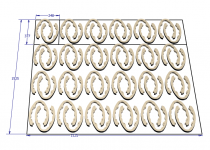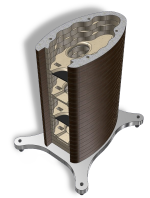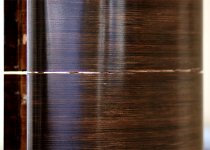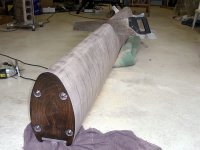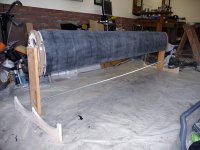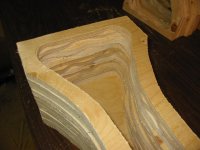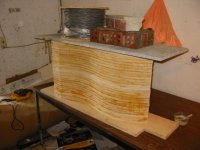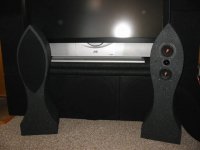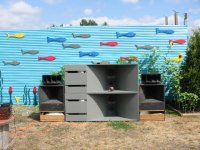Which way is better to do a translam enclosure? The laminations orientated up / down or stacked bottom to top?
Is there a difference between either ways?
Should the thickness of the walls vary?
This would be for a dual alpair 10p enclosure.
Thanks!!!
Is there a difference between either ways?
Should the thickness of the walls vary?
This would be for a dual alpair 10p enclosure.
Thanks!!!
hmm.. well no response on this?
Or doesn't it really matter which way the laminations are orientated?
Or doesn't it really matter which way the laminations are orientated?
Just a matter of what you want it to look like, or how much work you want to do.
Sketch all the ways you can think of, note difficulties of each, take your time.
Sketch all the ways you can think of, note difficulties of each, take your time.
Which way is better to do a translam enclosure?
The best way is not to translam.
Translam is a huge waste of material, both in that you throw so much away, and since you are not using the material in the direction it works best, you have to use more actual material for the box.
The only advantage is that it allows for unusual shapes (at a large cost of waste material, usually a lot more labour, and often inferior box).
This would be for a dual alpair 10p enclosure.
What enclosure? That will usually determine the more appropriate laminate orientation.
dave
What Dave said. To which I'd add a merry little detail that is often overlooked.
Most common sheet material thicknesses are nominal, not fixed. My friend Colin & I did a translam design. One. Because the sheer material wastage was so high for the moderate sized, boat-hull profile floorstanders in question, they took 5 sheets of material (ordinary construction = 2 sheets with some left over) to make. Which other than the cost, environmental impact etc., had the joyous effect of making one box 6mm taller than the other one because in practice the 5 sheets of void-free Finnish birch ply were all slightly different thicknesses, and we didn't notice the variation until it was too late to correct. It can be very minor in itself, but if your box is, say, 48in tall, the difference mounts up. Cue large amount of time spent with Stanley knife, chisel, plane, belt-sander, hand-sander etc.
Yes. There was blasphemy.
We never did another again. Far more trouble than it was worth. Especially since, acoustically speaking, it's not always ideal for structural strength / stability.
Most common sheet material thicknesses are nominal, not fixed. My friend Colin & I did a translam design. One. Because the sheer material wastage was so high for the moderate sized, boat-hull profile floorstanders in question, they took 5 sheets of material (ordinary construction = 2 sheets with some left over) to make. Which other than the cost, environmental impact etc., had the joyous effect of making one box 6mm taller than the other one because in practice the 5 sheets of void-free Finnish birch ply were all slightly different thicknesses, and we didn't notice the variation until it was too late to correct. It can be very minor in itself, but if your box is, say, 48in tall, the difference mounts up. Cue large amount of time spent with Stanley knife, chisel, plane, belt-sander, hand-sander etc.
Yes. There was blasphemy.
We never did another again. Far more trouble than it was worth. Especially since, acoustically speaking, it's not always ideal for structural strength / stability.
Last edited:
I've build two stacks of 2.25 meter high. The difference between both stacks was 1 mm. I had to exchange one of the sheets which was one mm off spec.
I'm not too worried about the environmental aspect, as these stacks were the only speaker build I did and I will stick with it 🙂. I bet Scottmoose and planet10 have used up way more sheets in total than I have used for my build.
The shape I used was interlocking, meaning less wasted material.
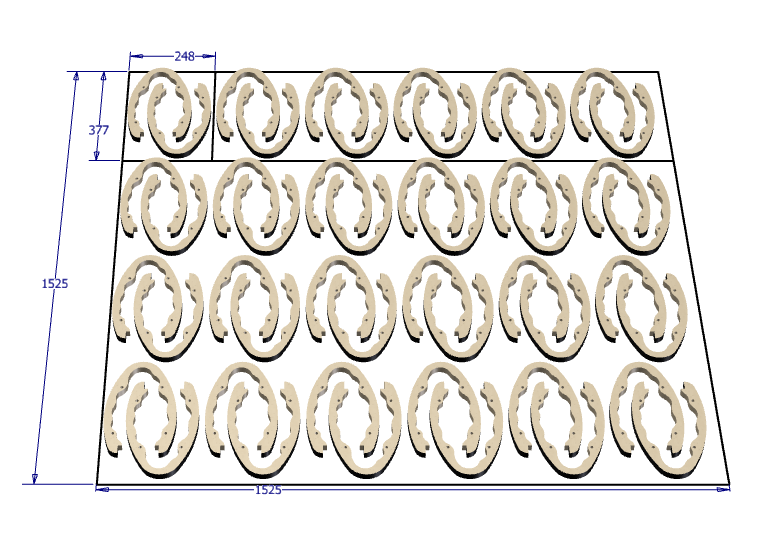
The reason I chose to build it that way is it was the easiest way I envisioned to get the outer shape as I wanted it.
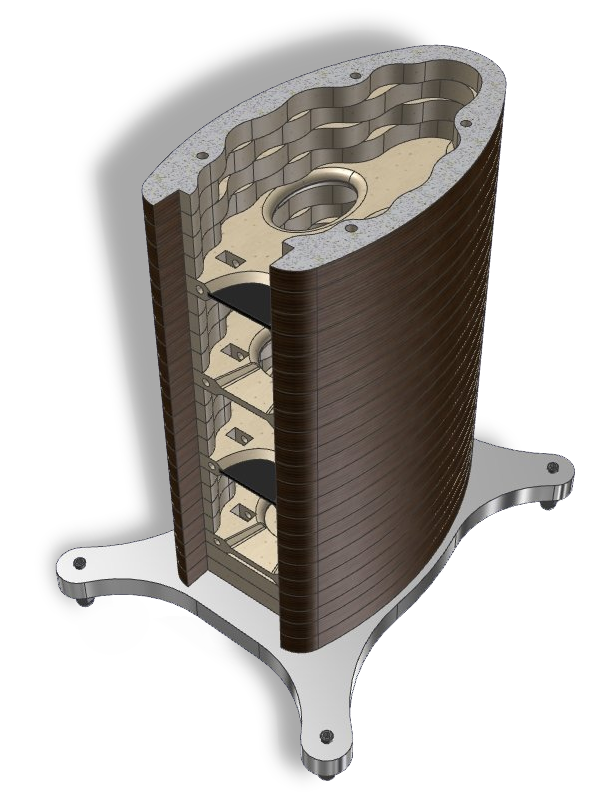
However, a stack as tall as I made it, isn't without drawbacks. Wood will continue to expand/extract and for a birch ply panel, the thickness is the one most varying under different circumstances. Meaning if you have a large changes in humidity, things will start to move. With my stacks this led to severe cracking.
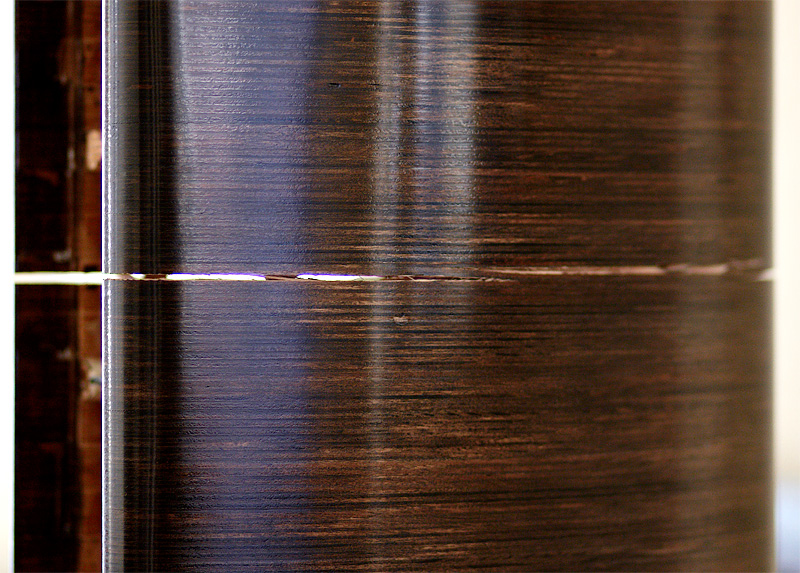
I had long threaded rods inside the stack, the idea was to use those threaded rods to put pressure on the stack to prevent this movement from ever happening, the stack was sealed inside and out with coats of polyurethane lacquer. Nothing is going to stop the wood from moving though. It will expand/contract and find a way to do it.
I don't think the rods I used were the reason for the cracks, as I've seen many samples of other stacked constructions crack, that didn't have that type of construction. It's just that wood will always move, one way or another, something has got to give.
I fixed my broken stacks by dividing them into smaller segments;
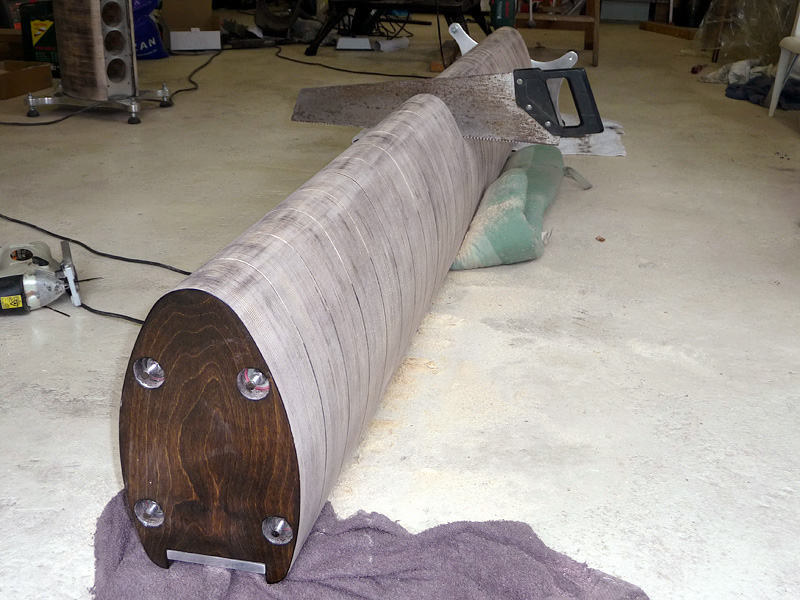
filling the voids with a compressible material and covering the whole sequence of smaller stacks with fiberglass matt and epoxy. I chose epoxy because that doesn't shrink when curing, unlike polyester.
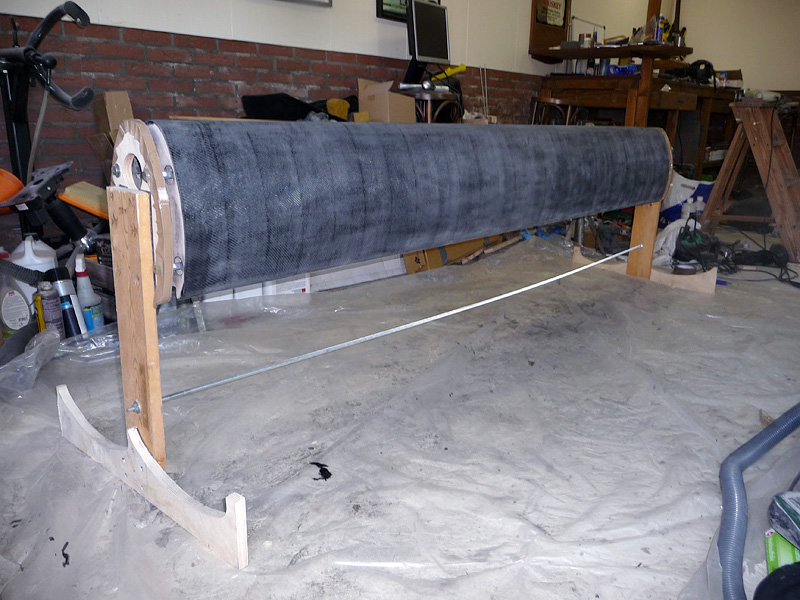
They have been in use ever since I finished them at the end of 2014, and I haven't felt the urge to build other speakers/enclosures, so even though I may have used more raw material in this build, I saved a huge pile of material as I did not need any follow up builds of different shape or sizes. For me this was a one time deal. I'd do it again, but slightly different 😉.
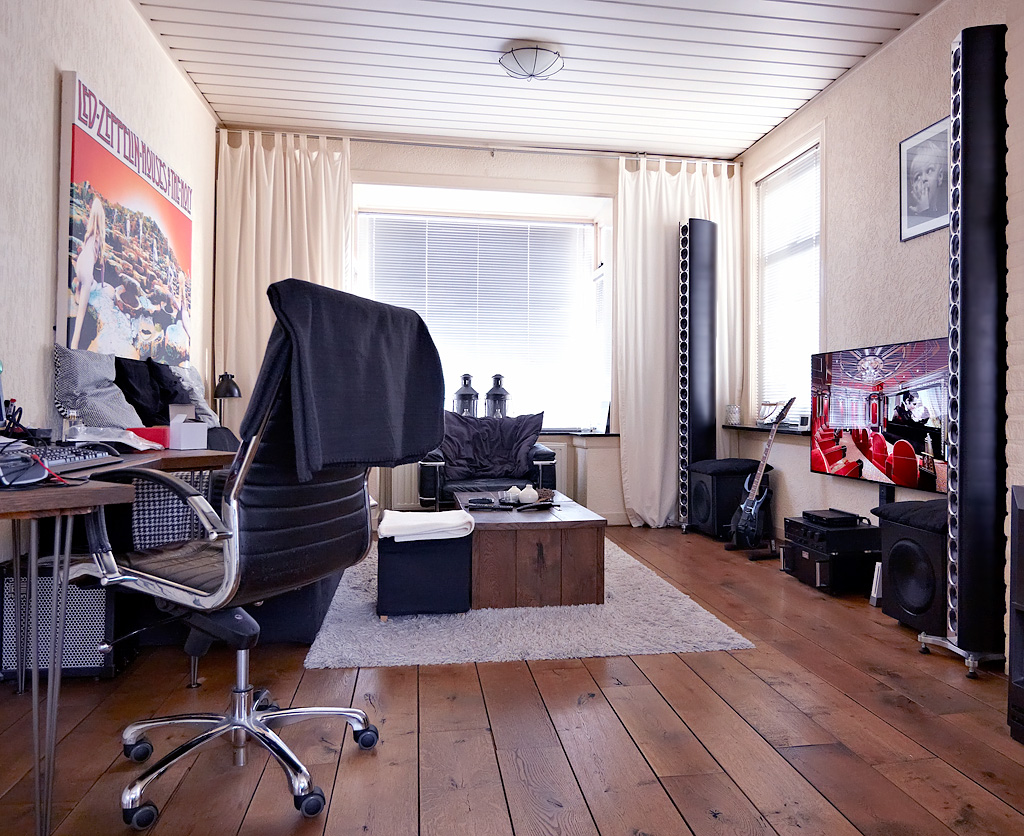
A stack build up along the length axis would not be as tall and just might survive the humidity changes in one piece. Still you've got to be aware of this when thinking of building speakers like that.
I'm not too worried about the environmental aspect, as these stacks were the only speaker build I did and I will stick with it 🙂. I bet Scottmoose and planet10 have used up way more sheets in total than I have used for my build.
The shape I used was interlocking, meaning less wasted material.
The reason I chose to build it that way is it was the easiest way I envisioned to get the outer shape as I wanted it.
However, a stack as tall as I made it, isn't without drawbacks. Wood will continue to expand/extract and for a birch ply panel, the thickness is the one most varying under different circumstances. Meaning if you have a large changes in humidity, things will start to move. With my stacks this led to severe cracking.
I had long threaded rods inside the stack, the idea was to use those threaded rods to put pressure on the stack to prevent this movement from ever happening, the stack was sealed inside and out with coats of polyurethane lacquer. Nothing is going to stop the wood from moving though. It will expand/contract and find a way to do it.
I don't think the rods I used were the reason for the cracks, as I've seen many samples of other stacked constructions crack, that didn't have that type of construction. It's just that wood will always move, one way or another, something has got to give.
I fixed my broken stacks by dividing them into smaller segments;
filling the voids with a compressible material and covering the whole sequence of smaller stacks with fiberglass matt and epoxy. I chose epoxy because that doesn't shrink when curing, unlike polyester.
They have been in use ever since I finished them at the end of 2014, and I haven't felt the urge to build other speakers/enclosures, so even though I may have used more raw material in this build, I saved a huge pile of material as I did not need any follow up builds of different shape or sizes. For me this was a one time deal. I'd do it again, but slightly different 😉.
A stack build up along the length axis would not be as tall and just might survive the humidity changes in one piece. Still you've got to be aware of this when thinking of building speakers like that.
Attachments
I've build two stacks of 2.25 meter high. The difference between both stacks was 1 mm. I had to exchange one of the sheets which was one mm off spec.
I'm not too worried about the environmental aspect, as these stacks were the only speaker build I did and I will stick with it 🙂. I bet Scottmoose and planet10 have used up way more sheets in total than I have used for my build.
Possibly a few, although believe it or not, unlikely to be a vast amount more. I rarely build enclosures myself as my woodworking skills are somewhere south of nil, and speaking in the literal sense 99.99% of all the speakers I've designed in the last 20 years have been on behalf of / for other people. Indirectly responsible for the use of material by others though, for better or worse. Probably worse. 😉 In mine own defence on that front though, I've used the same speakers at home since 2016, and that isn't likely to change any time soon.
I actually had some left over material that became the subs in the picture above. Using up the sheet that differed in thickness. 🙂. Other scrap pieces made up my small ambient speakers. I still have some leftovers that I will find a use for some day.
I bet Scottmoose and planet10 have used up way more sheets in total than I have used for my build.
I do not doubt that, but we have 100s of pairs to show for it, you a pair so not a fair comparison.
wesayso’s stack is indeed an impressive build (even if i do not like the TC9 at all).
One of these days, 60 CHN50s (in rectangular baskets) would be a nice project to try (but not translam.
dave
Do note that the orientation — and that they are each a translam piece — means that the bracing is largely ineffective as bracing (it should to be separate pieces running longitudinally to be effective — they could well help suppress the quarer wave resonance. The wavey insides are of such small size that they are near negligable too (small enuff that damping should deal with the same frequencies). Doesn’t hurt thou.
If you do decide to go translam, well worth reading wesayso’s thread as it will help you avoid some of the issues with translam.
dave
I rarely build enclosures myself
When i say i or we build, it was usually Chris (sometimes Bernie) who did our builds. We often bought plywood a lift at a time.
I've used the same speakers at home since 2016, and that isn't likely to change any time soon.
Mostly the same ones since summer 2017.
dave
I chose to go the other direction for my PBH cabinets as I had a plan for the leftovers. I painted the wall blue and recut the centres into fish and other shapes.
Attachments
Planet10 and Scottmoose,
If you had to build a replica of wesayso's line array, what alternative construction technique would you use if you decided not to go the translam route?
Thanks.
If you had to build a replica of wesayso's line array, what alternative construction technique would you use if you decided not to go the translam route?
Thanks.
The most interesting part of that project was the wall of fish
Cod moving in a mysterious way?

gassit,
If I may interject, both Dave and Scott have mentioned they're not the carpenters, they are the brains.
Construction is where I might be able to help. If I were to make something like wesayso has, I would make a horizontal cradle jig. I would use a roller to apply the glue and I would ask a couple of friends over to ensure the assembly was swift. I would use pipe clamps and eliminate the threaded rods.
You can probably get a little less wastage if each of the horseshoe pieces is intertwined with the legs of two other pieces rather than one, judging by what he has posted. If there is more curve than shown, no. Cutting is less complicated his way.
If I may interject, both Dave and Scott have mentioned they're not the carpenters, they are the brains.
Construction is where I might be able to help. If I were to make something like wesayso has, I would make a horizontal cradle jig. I would use a roller to apply the glue and I would ask a couple of friends over to ensure the assembly was swift. I would use pipe clamps and eliminate the threaded rods.
You can probably get a little less wastage if each of the horseshoe pieces is intertwined with the legs of two other pieces rather than one, judging by what he has posted. If there is more curve than shown, no. Cutting is less complicated his way.
There are gray sharks, yellow fin tuna, red snapper and bluefish there. Not to mention the assortment of sea life on the bottom and perching birds in the upper right.Cod moving in a mysterious way?
No new wood was used in that wall.
Sometimes I miss my 'creative' days. Mind you, I simply don't have enough brain cells left to go back. 🙂
If you had to build a replica of wesayso's line array, what alternative construction technique would you use if you decided not to go the translam route?
It would not be a replica except that it would have a large array of small drivers.
1st comes the rectangular CHN basket… one would probably have to buy a 1000 to get 1. With that many it should be possible to get a number of batches of well matched drivers (more so sensitivity than anything else). It would be accompanied by an array of woofers. Be nice if they were small and worked well sealed (boy i miss the CSS SDX7).
Then 2 aluminun L-shaped (cross0section) bars, tapped for screws. With gasket tape one can then mount 30 CHN onto the 2 rails to create the driver assembly.
As close to zero space as practical. I am a big fan of aperiodic TLs for midTweeter duty, but if more bass extension needed a clever technique might be needed.
A mid TL of adequate size would simply be 2 angled sides with a top & bottom plate (and appropriate bracing — including a holey driver brace (besides the usual, to reduce the bending motion of the baskets given that they are suspended from their ends.
So pysical execution would be fairly straigword. Installing 120 screws and soldering 60 terminals would be the most labour intensive part. Unless you don’t have a CNC to do the holey brace. And i would EnABL all 60 drivers.
The hard part is getting the EQ right, One has to deal with the 3dB/octave (theoretical infinite array) drop in FR and the complications due to a finite line and a real room. Many have done the initial legwork, just a whole lot of reading and a good DSP (anyone know which ones are 24/192 and have good DACs) or i can use my own).
dave
Cal and Planet10, thanks for the replies.
It'll take a while to get my head around your answers but, when I do, I may come back with another question or two.
Thanks again.
It'll take a while to get my head around your answers but, when I do, I may come back with another question or two.
Thanks again.
- Home
- Loudspeakers
- Full Range
- translam cabinets
